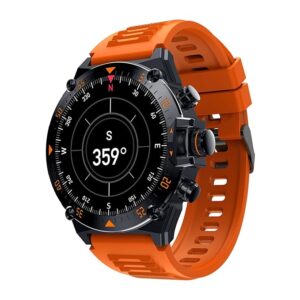Weight Loss by Walking Programs
There are many weight loss programs available, but for working women, housewives, or anyone who cannot engage in cardio exercises, walking is an option that everyone can easily incorporate into their routine at their convenience. Walking is a simple and effective method for weight loss
For housewives or anyone who makes walking a part of their daily routine, it can indeed help in reducing calories. Walking, even if done at various times throughout the day, contributes to overall calorie burn and supports weight loss when combined with a balanced diet. The key is consistency—regular walking, even if it’s in shorter intervals, can be effective in managing weight and improving overall health.
Generally, women tend to gain weight more than men. Major reasons for this include:
Physical Structure: Women’s bodies have a tendency to store more fat compared to men. This is essential for pregnancy and natural bodily functions. The storage of additional fat can lead to weight gain.
Hormonal Changes: Women experience hormonal fluctuations during menstruation, pregnancy, and menopause. Hormones such as progesterone and oestrogen can contribute to weight gain.
Metabolic Rate: Men usually have a higher metabolic rate (the speed at which calories are burned) than women, making it easier for men to lose and maintain weight.
Diet and Lifestyle: Dietary habits and lifestyle choices, such as high-calorie intake, low physical activity, and stress, can contribute to weight gain.
Menstrual Cycle Fluctuations: During menstruation, the body may retain extra water, leading to temporary weight gain.
These factors can contribute to weight gain, but individual differences in physical composition and lifestyle can vary.
Addressing Weight Gain: Causes, Symptoms, and Solutions
In today’s lifestyle, weight gain has become a significant issue. Many factors contribute to weight gain, including irregular eating habits and consumption of fried, junk, and processed foods. Identifying the cause of weight gain is crucial. Often, people may not realize the gradual effects of external foods or lifestyle changes until they see sudden weight gain or experience difficulties like shortness of breath or discomfort while climbing stairs. Ignoring these signs can lead to serious health issues such as diabetes or high blood pressure.
It’s important to consult a doctor if you notice any such symptoms. A healthcare professional can help identify the cause of weight gain and check for any underlying health conditions.
Assuming no major health issues are found, addressing external food consumption, stress, or sedentary behaviour is essential. Adopting a positive approach and making lifestyle changes can help in weight management.
Weight Loss by Walking: Benefits and Key Considerations:
Walking is an excellent exercise for weight loss. However, it’s important to follow your doctor’s advice, especially if you have knee or leg pain, as walking may not be effective.
Walking is a convenient and often undervalued form of exercise. Research has consistently shown that walking promotes heart health, improves mood, aids weight management, and reduces the risk of chronic diseases.
Before starting any new exercise program, it’s wise to consult with your doctor. Discuss your fitness goals to get permission to start. Knowing your Maximum Heart Rate (MHR) can be useful. The simple formula is 220 minus your age = MHR. Keeping your walking intensity at 60% to 70% of MHR is recommended. This means focusing on increasing your heart rate rather than the speed of walking. Movements like swinging your arms, increasing your steps per minute, and breathing deeply help elevate your heart rate.
Effective Tips for Weight Loss by Walking: Strategies and Best Practices
Set Clear Goals : Define what you want to achieve with your walking routine, such as weight loss, fitness improvement, or mood enhancement.
Start Gradually: If you’re new to walking, begin with shorter distances and gradually increase time and intensity as your fitness improves.
Maintain a Steady Pace: Choose a pace where you can talk but still need to catch your breath. This ensures you’re working at the right intensity.
Include Interval Training: Alternate between different walking speeds, such as one minute of fast walking followed by two minutes of moderate pace.
Use Proper Form: Stand upright, engage your core, and swing your arms naturally. Good posture and arm movement help burn more calories.
Choose Varied Routes: Walking on different terrains, like hills or uneven paths, can increase intensity and challenge different muscles. (Those with knee issues should be cautious and consult a doctor.)
Add Weights: Using light hand weights or a weighted vest can intensify the walking workout and help burn more calories.
Track Progress: Use a pedometer or smartphone app or Smart Watch to monitor steps, distance, and progress toward your goals.

Stay Hydrated and Eat Well: Drinking water and maintaining a balanced diet support weight loss efforts and overall health.
Listen to Your Body: Pay attention to how your body feels during and after walking. If you experience pain or fatigue, rest and adjust your routine as needed.
Set Goals: Beyond just measuring weight, consider participating in local 5K events or setting other goals to stay motivated.
Start Smart: Avoid expecting to walk 10,000 steps at once. Gradually increase your walking time and intensity to stay motivated and successful. For example, if you’re comfortable walking for 30 minutes, increase it to 45 minutes before adding more.
Stay Hydrated: As the body is mostly water, staying hydrated throughout the day and after walks is crucial. For long walks, consider carrying a water bottle or hydration pack.
Choosing the Right Walking Shoes for Effective Weight Loss
Wear Appropriate Shoes: Although walking requires minimal gear, investing in good walking shoes (or sports shoes) is essential to prevent injuries and provide proper support.-

For Buy Now Click here
Choosing Walking Shoes
Selecting the right shoes is important for walking. Specialized walking shoes are designed with good arch support, cushioning, and flexibility to prevent injuries and ensure comfort. If walking shoes are unavailable, high-quality sports shoes with good cushioning and support can also be suitable.
Professional Advice: Consider consulting a professional trainer or fitness expert for recommendations based on your foot type and walking style.
Online Research : Explore various brands and models online, and read customer reviews to find the best option for you.
When buying shoes, consider your foot type, walking style, and the importance of comfort. Proper footwear enhances your walking experience and helps achieve fitness goals effectively.
Be Healthy
Incorporating walking into your weight loss program can be a transformative and accessible approach to achieving your fitness goals. By selecting the right walking shoes and following a consistent routine, you enhance your comfort and effectiveness during exercise.
Walking not only helps in burning calories but also promotes overall well-being. Embrace walking as a key component of your weight loss strategy, and you’ll find a healthier, more active lifestyle within reach.
For Weight Loss Program more details click here
Earn Income as Influencer – Click here
For Movie Review – Laaptaa Ladies Click here
How to earn money in Dollars $ – Click here







14 thoughts on “Weight Loss by Walking in 30 Days”